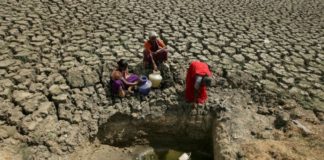In my book How the World Ends – Understanding the Growing Chaos, I traced the source of growing unrest and crisis across the world to three root causes – food distribution, water scarcity, and population distribution. In the final chapters of the book, I explained that each of these issues is solvable, but a collapse of leadership around the world has guaranteed the problems will get worse – not better. Recently, new evidence of the growing freshwater crisis occurring throughout the world is becoming apparent as investing in water scarcity becomes more mainstream.
Many readers may remember the 2015 movie The Big Short that told the story of the excess, greed, and irrational mindsets that guided the economy to the 2008 meltdown. Characters such as Michael Burry, played by Christian Bale, made more than $100 million (in real life), betting the mortgage markets would turn downward. At the same time, everyone else continued to believe markets would forever point upward. In the movie’s final moments, as the credits begin to scroll, we learn where Michael Burry was placing his next focus. He was looking at water. Presumably, the same logic was at play. While the world pretended nothing was wrong, Burry recognized a shortage that would inevitably lead to investment value. If the supply is low, the price must go high. Those are the laws of supply and demand that govern the global economy.
This is no longer the setting for Hollywood drama. While top-level investors could previously invest in water supply and shortages, making money off the world’s misfortune, today, that investment opportunity is beginning to open to broader markets. Like gold, oil, and other commodities, investors can now invest in water on the global markets. According to a recent report from Bloomberg, “Farmers, hedge funds and municipalities alike will be able to hedge against — or bet on — potential water scarcity…”

Two billion people already live in nations plagued by water shortages. In the next decade, two-thirds of the earth will enter the ranks of water scarcity. A United Nations study projected that as many as 30 nations – not cities, but nations – will be water-scarce by 2025. Eighteen of these nations are located in the Middle East and North Africa. Israeli water experts anticipate that half of the world will live in countries with chronic water shortages by 2050.
The threat of global water scarcity is not a future and far off threat. It is already happening. These experts are merely forecasting the rate at which this dire crisis will continue to unfold in the coming years and decades.
The new market investment opportunity offers a way to monetize and normalize the age of water crises the world is entering. For the last fifty years, Americans and other nations cynically noted many of the wars fought by major powers was more about oil than about justice or the advertised ideologies of human rights and democracy. The next generation will likely hold this same perspective for the era of water and resource wars. Investors’ ability to place bets on these looming crises is not only a monetization of human misery. It also suggests the water crisis has reached acceptance levels in global awareness and understanding to facilitate a market that would draw investors.








